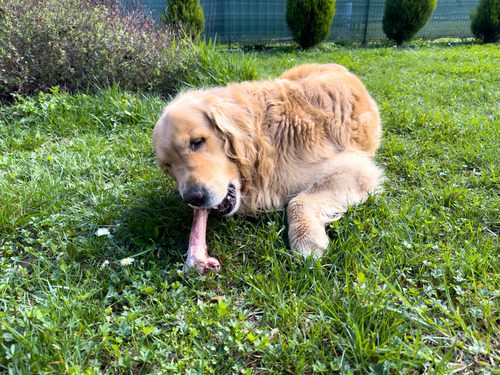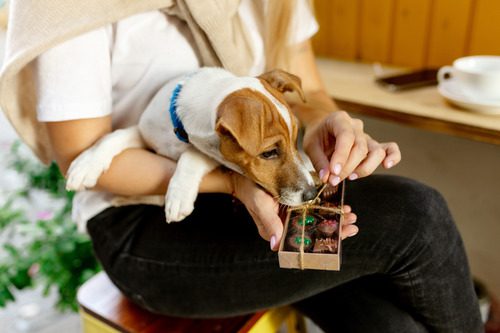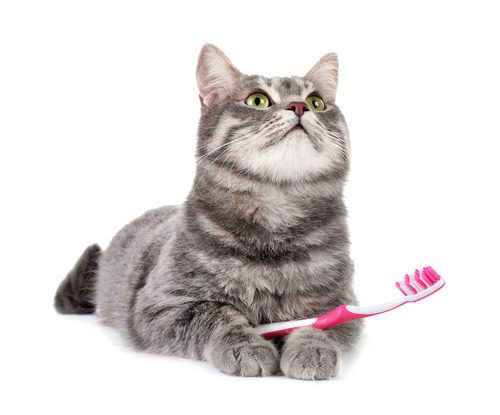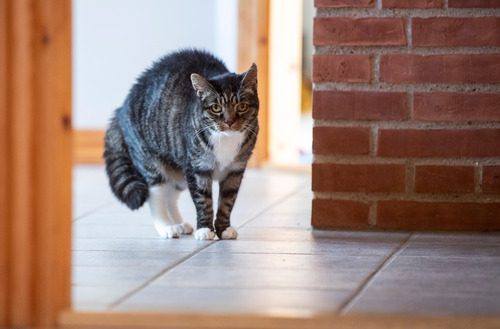Is My Dog Overweight: What Dog Owners Should Know
Does your dog seem like they could have a weight problem? Are you unsure whether or not your dog’s body weight falls into an unsafe territory? How can you tell, and what do you need to know about having an overweight dog? If you’ve ever wondered, “is my dog overweight,” or have been concerned about your dog’s weight, then this article will be a great resource for you.
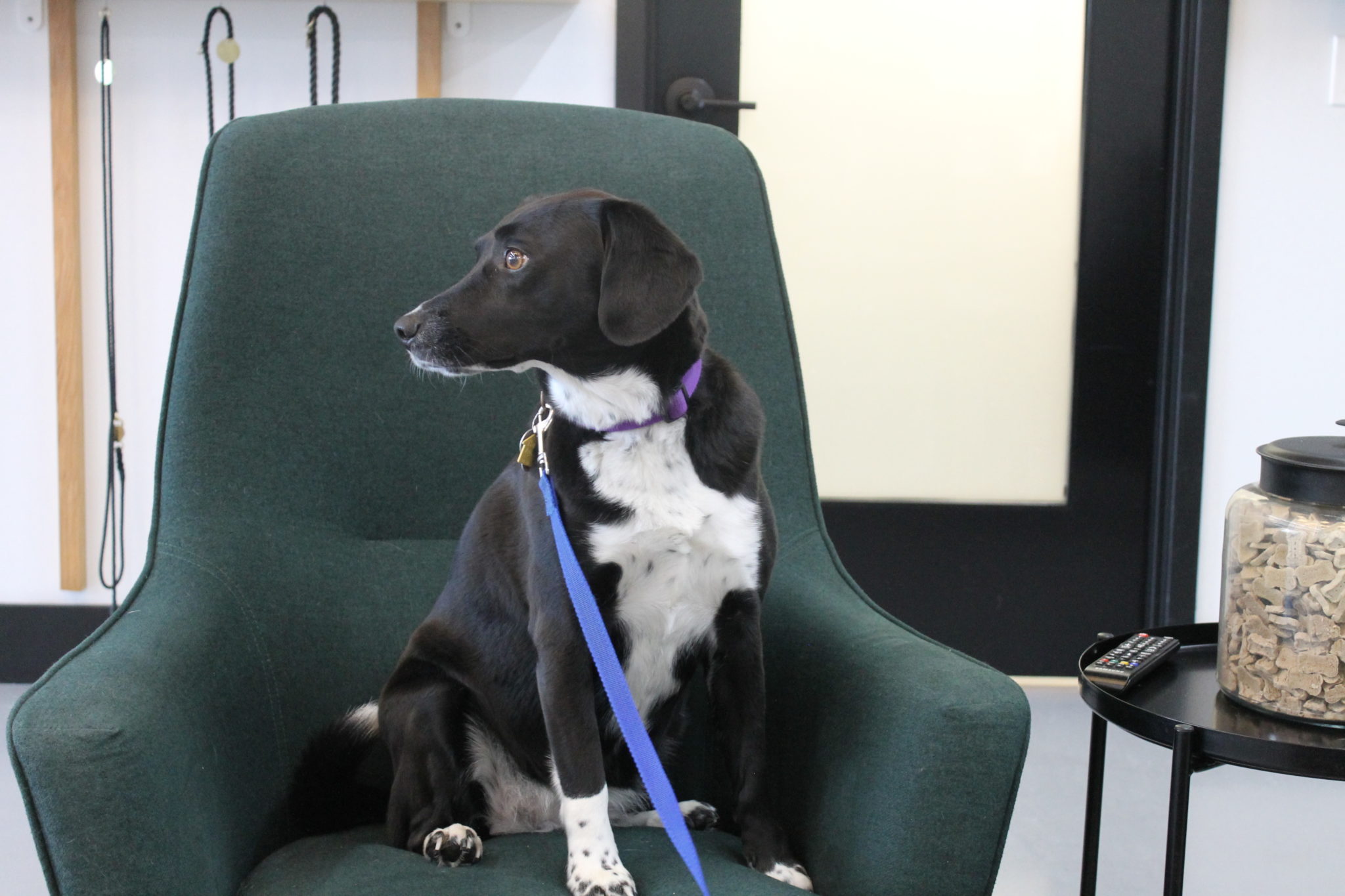
In the article below, you’ll find out plenty of information to help you understand when your dog might be fat. You can also find useful tips that make it easy to tell just when this is a problem and what you should do about it. Read on to find out more about your pet’s weight.
How to Tell Your Dog is Overweight
A question that accompanies “is my dog overweight” is “how do I tell if my dog is overweight?” There are a couple ways to check to see if your dog might be overweight, but the most important one is to consult with a veterinarian. Not only will they be able to verify if your dog is overweight, they’ll also be able to develop the best plan for your pet to help with weight management.
Below are 4 ways to determine if your dog is overweight:
Work with a Vet
By working with a vet, you can weigh your dog accurately every time you take them in for a visit. The vet can also give you information about helping your dog lose weight and can tell you whether or not they really need to, as well.
Look Down at Your Dog
Looking down at your dog, they should have a defined waistline. If they look round, they may be overweight.
Feel Your Dog’s Ribs
Some pet owners think it is a bad thing to be able to feel a dog’s ribs. However, you should be able to easily feel a dog’s ribs without having to press too hard or feel around very much.
If you cannot do this, then your dog may be overweight.
View Your Dog from the Side
A dog of a healthy weight should have a waistline that sits slightly higher on the body than the chest. If your dog is overweight, their waist may swing from side to side or may have a round or oval shape when you look at them instead. Either of these can indicate a dog who needs to lose some weight.
Risk Factors for Dogs Who are Overweight
Along with being able to answer the question “is my dog overweight,” you should know the risk factors that can come from a dog being overweight. Even though the conditions below can be caused by other factors, making sure your dog stays at a healthy weight will play a big role in helping prevent any of these from happening.
Common risk factors that can develop in overweight dogs include:
Diabetes
One of the most common problems associated with dogs who are overweight is diabetes. Dogs may quickly develop this problem if they are left at an unhealthy weight without working on it for a while. If your dog is diagnosed with diabetes, they will need medicine and possible injections for the rest of their life to manage it.
Arthritis and Hip Dysplasia
While it is true that some dogs may contract either of these conditions whether or not they are overweight, being overweight makes both arthritis and hip dysplasia in dogs much more likely. If your dog weighs too much, their joints will suffer as well with either arthritis or hip dysplasia.
Breathing Difficulties
Dogs who are extremely overweight may have trouble breathing. They may not be able to get up, walk around, or play very well without struggling to breathe, which can be very dangerous. By keeping your dog at a healthy weight, you can help them breathe better, too.
Heart Disease
Just like in humans, heart disease is more common in dogs who are overweight than those who are in shape. Give your dog the best possible chance at avoiding heart disease by keeping them at a healthy weight through all the stages of their life.
What to Do if Your Dog is Overweight
If you’ve found out that the answer to the question, “is my dog overweight,” is yes, then you’re likely asking yourself what you can do to help them get down to a healthy weight.
Here are some things you can do to help with your dog’s weight management:
Daily Exercise
Your dog needs to exercise every day. It’s important to give your dog at least 15 minutes of exercise every day, but it is even better to aim for one to two hours, as long as they don’t have any health problems that prevent them from being able to safely exercise for this long.
Adjust Their Diet
George Melillo, Founder and Chief Veterinary Officer of Heart +Paw, also provides the following recommendation to help with your dog’s weight management: “In some cases, you can try cutting back the amount of food you give your dog by 10% every day. This may help your pet lose weight in a short amount of time. Most times, a calorie restricted diet is the optimal way for a pet to lose weight. Your veterinarian should be able to make a recommendation for you.”
Cut Back on Treats
Dog treats are high in calories, which is what makes them so tasty. It’s okay to give a few treats a day to a dog who is a healthy weight, but if your dog is overweight, they need to cut back on the “junk food.”
Instead of dog treats, give them steamed carrots or green beans (with no salt or seasonings), or simply some ice cubes to munch on.
Increase Fiber
More fiber in your dog’s diet will help them feel fuller for longer, which means they will be less inclined to overeat. Additionally, this fiber helps your dog digest their food better and keeps their bowel movements regular too.
Seek Advice from a Vet for the Question, “Is My Dog Overweight?”
If your dog is overweight, you can keep the tips above in mind to help get them back to a healthy weight once again. Your vet may also have specific recommendations for your pet based on their age, health, and individual needs, so be sure to talk to your dog’s regular vet as soon as possible about their weight. With the help of a professional, you can get your dog back to a good weight for their needs in no time.
For more information about your dog’s health, or if you’re asking yourself “is my dog overweight,” bring your pet to one of our Heart + Paw locations. Our compassionate team with examine your pet and develop the best treatment plan that works for them. Book an appointment with us by scheduling online or calling us.
Recent Posts
Can Dogs Eat Ham?
Ham is a popular meat found on many dinner tables, especially during the holidays. As a dog…
8 Signs and Symptoms of Diabetes in Dogs
Caring for a dog means being tuned in to the subtle changes that can reveal their overall…
Why Dogs Can’t Eat Chocolate and Tips for Keeping This Sweet Treat Out of Their Reach
Chocolate is a beloved indulgence for us, but for our dogs, it’s a hidden danger that can…
Why Cat Teeth Cleaning is Important For Your Pet’s Health
As a cat owner, you know how important it is to care for your feline friend’s overall…
Cat Body Language: A Guide To Understand What Your Cat is Telling You
Imagine trying to communicate without words, relying solely on subtle gestures, glances, and movements. This is how…
About Us
Heart + Paw was founded in 2018 by Chief Veterinary Officer Dr. George Melillo, who currently serves the Mid-Atlantic area. Heart + Paw offers a combination of veterinary care, pet grooming, and dog daycare to help be a resource in your pet parenthood journey.
We'd Love to Meet Your Four-Legged Friends
Find out how the friendly veterinary team at your local Heart + Paw can help your pets live longer, healthier lives by searching for a location near you.

